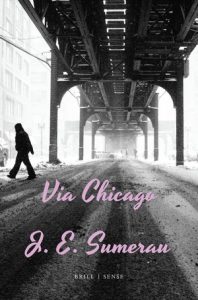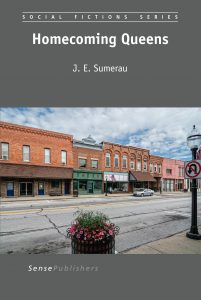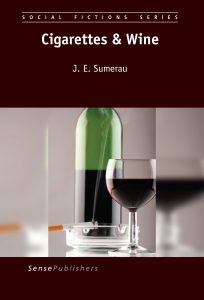Via Chicago
Number 33 in the Social Fictions Series available for purchase here
What is a family? How do families of choice develop?
These questions permeate Via Chicago as ten people come together as a familial unit after each experiencing and (at least) beginning to recover from prior traumatic experiences. Ella and Linsk are a nonmonogamous couple who have helped one another heal and built an unconventional family together with Case, Kaisa, Reeves, Jo, Andrei, and Michelle over the course of a decade. As the novel begins, Mercury has just moved to Chicago to pursue graduate study when they begin a romantic relationship with Ella and a broader emotional engagement with the family. At the same time, Mercury is beginning to work through traumatic past experiences while Jo might have found love in the form of a new guy the family just calls Twitter Boy. As the novel progresses, we follow Mercury, Jo, and the rest of the family as each relates to their own and others’ traumatic experiences and bonds together over these and other shared aspects of their lives, desires, and goals.
Via Chicago could be utilized in the teaching of sociology, families, romantic relationships, gender, sexualities, geography, urban studies, LGBTQIA studies, polyamory, trauma recovery, or narrative courses, or of course, it could be read entirely for pleasure.
More Information
——————————————————————————————————————–
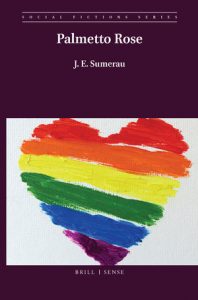
Palmetto Rose
Number 29 in the Social Fictions Series available for purchase here
Imagine engaging in sexual intimacy with someone you care about for the first time after surviving the loss of a serious, committed, loving relationship. In Palmetto Rose, this is where we find a bi+, gender fluid narrator affectionately called Kid by their loved ones. After five years trying to numb and escape the pain of losing their first love to a tragic accident, Kid begins to wake up, grieve, and try to rebuild their life in Atlanta, Georgia. Through their eyes, we watch as they seek to make sense of grief, pursue the possibility of a college education, and embark on their first serious romantic relationship since they were a teenager. In the process, we spend time with their chosen family of friends who navigate relationships, graduate programs, and developing careers. As the story unfolds, these friends face the ups and downs of early adulthood alongside the ways their individual and shared pasts find voices in their current endeavours, future plans, and intertwined lives. Although many characters in this story originally appeared in Cigarettes & Wine, Homecoming Queens, or Other People’s Oysters, Palmetto Rose may be read as a stand-alone novel.
More Information
————————————————————————————————————————————————
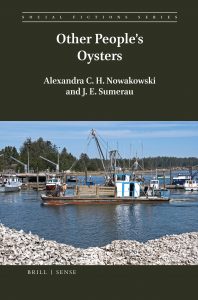
Other People’s Oysters (with Alexandra C.H. Nowakowski)
Number 27 in the Social Fictions Series available for purchase here
There may be no more famous form of seafood than an Apalachicola oyster. People travel from all over the world for the chance to try out these oysters and gush over just how large, flavorful, and unique they are in comparison to other foods. In Other People’s Oysters, however, Apalachicola oysters are not merely internationally known delicacies bringing money and recognition to the bay – they are the center of family ties, a symbol of a disappearing way of life, and the catalyst for a social movement that rocks the nation. Tripp and Jessica Rendell have lived on Richards Island in the Apalachicola Bay harvesting, selling, and cooking oysters for decades. During this time, their children – Carina, Bobby, and Roy Lee – grew up to take over the harvesting business (Carina), take over the family restaurant (Bobby) and run off into the wider world to become a lawyer and political activist (Roy Lee). Through the eyes of Carina, we watch life and work change throughout the bay throughout these decades, and witness the ways corporate, environmental and political policy focused more on wealth than the lives of the people and the conservation of the bay led to increasing poverty, decreasing oyster production, and the ongoing destruction of the bay. But when her latest series of law suits seeking aid and reparation stall in the courts, Roy Lee moves back home and forms a plan for taking back the bay, raising up the people, and fighting for the Rendells’ way of life. Other People’s Oysters may be read entirely for pleasure and used in courses focused on social movements, families, class dynamics, politics, environmentalism, mental diversity, sexualities, gender, rural and small town cultures, intersectionality or the American southeast.
Sample Chapter
——————————————————————————————————————————————-
That Year 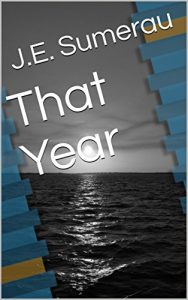
2017; available for purchase here for $2.99 ebook (free on Kindle Unlimited) or $5.99 paper
What does the world look like through non-binary eyes? What does it feel like to start over in a city after being raised in a small southern town? What does it feel like the first time someone finds affirmation and embrace in a community? In That Year, we follow Collings as, with the help of a supportive grandmother and grams’ special friend, they navigate each of these questions in Tampa, Florida. Told from Collings perspective, we walk with them as they navigate emerging adulthood, cisgender norms and assumptions, and their first experiences living openly as a non-binary, pansexual young adult.
Sample Chapter
——————————————————————————————————————————————-
Homecoming Queens
Number 26 in the Social Fictions Series available for purchase here
“It’s hard for me to keep a straight face at the thought of living in a place called Queens with my husband and former homecoming queen wife,” Jackson thinks when his spouses inform him of their desire to move back to their hometown following the death of a parent. In Homecoming Queens, this decision sets in motion events that will dramatically transform the three spouses, their understanding of the past, and the town itself. As Jackson Garner leaves Tampa, he introduces us to Queens, a small town in Georgia situated between Atlanta and Augusta. In Queens, Jackson, Crystal and Lee encounter supportive regulars at the diner they take over from Crystal’s father as well as hostile locals who find bisexuality, polyamory, and other “alternative” lifestyles unsavory. They also confront the traumatic event that led Crystal and Lee to leave town after high school. Along the way, they face the history and ghosts of the town, the tension between an LGBT friendly pastor and some of his anti-LGBT congregants, the struggles of a kid seeking gender transition, and the ongoing battle between progress and tradition in the American south. Homecoming Queens can be read purely for pleasure or used as supplemental reading for courses in sexualities, gender, relationships, sociology, families, religion, the life course, the American south, identities, culture, intersectionality, and arts-based research.
Sample Chapter
——————————————————————————————————————————————-
Essence 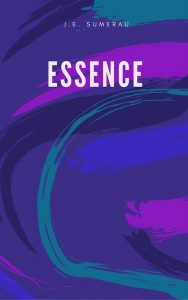
2017; available for purchase here for $2.99 ebook (free on Kindle Unlimited) or $5.99 paper
Dating, relationships, and intimacy can be difficult enough waters to navigate for twenty-somethings with limited experience, knowledge and financial means. These experiences can become even more complicated for Queer people in southern small towns. In Essence, we meet and follow Brandon and Willa – two bisexual companions in their early twenties who at times are more than friends – as they seek to figure out what they mean to each other, intimate experiences with others, and their first encounters with poly relationships, non-binary people, intersex people, asexual people, and the complexities of falling in love.
Sample Chapter
——————————————————————————————————————————————-
